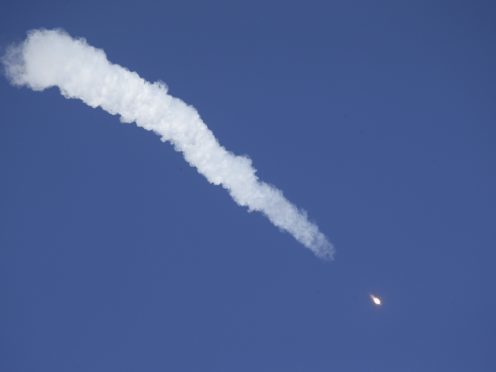Two astronauts from the US and Russia are safe after an emergency landing in Kazakhstan following the failure of a rocket taking them to the International Space Station.
Nasa astronaut Nick Hague and Roscosmos’s Alexei Ovchinin lifted off as scheduled at 2.40pm local time from the Baikonur cosmodrome on a Soyuz booster rocket.
But Roscosmos and Nasa said the three-stage booster suffered an emergency shutdown of its second stage.
The capsule jettisoned from the booster and went into a ballistic descent, landing at a sharper than normal angle and subjecting the crew to heavy G-forces.

Nasa said that rescue teams have reached Mr Hague and Mr Ovchinin and they have been taken out of the capsule and were in good condition.
The capsule landed about 12 miles east of the city of Dzhezkazgan. The emergency is the latest mishap for the Russian space programme, which has been dogged by a string of launch failures and other incidents in recent years.
“Thank God, the crew is alive,” Russian President Vladimir Putin’s spokesman, Dmitry Peskov, told reporters when it became clear that the crew had landed safely.

Russian Deputy Prime Minister Yuri Borisov said all manned launches will be suspended pending an investigation into the cause of the failure. Mr Borisov added that Russia will fully share all relevant information with the US.
Russian controllers told the three astronauts on the space station that Mr Hague and Mr Ovchinin endured 6.7 times the force of gravity during their entry.
“Glad our friends are fine,” space station commander Alexander Gerst, a European Space Agency astronaut from Germany, tweeted from orbit. “Spaceflight is hard. And we must keep trying for the benefit of humankind.”
Glad our friends are fine. Thanks to the rescue force of >1000 SAR professionals! Today showed again what an amazing vehicle the #Soyuz is, to be able to save the crew from such a failure. Spaceflight is hard. And we must keep trying for the benefit of humankind #Exp57 #SoyuzMS10 pic.twitter.com/H7RmToBb5C
— Alexander Gerst (@Astro_Alex) October 11, 2018
There was no immediate word on whether the space station crew might need to extend its own six-month mission.
Two space walks planned for later this month were off indefinitely, Mr Hague was supposed to be one of the space walkers.
It was to be the first space mission for Mr Hague, who joined Nasa’s astronaut corps in 2013. Mr Ovchinin spent six months on the orbiting outpost in 2016.
Roscosmos chief Dmitry Rogozin, who watched the launch together with Nasa Administrator Jim Bridenstine, tweeted that a panel has been set up to investigate the cause of the booster failure.

Earlier this week, Mr Bridenstine emphasised that collaboration with Russia’s Roscosmos remains important.
Relations between Moscow and Washington have sunk to post-Cold War lows over the crisis in Ukraine, the war in Syria and allegations of Russian meddling in the 2016 US presidential vote, but they have maintained cooperation in space research.
The Russian Soyuz spacecraft is currently the only vehicle for ferrying crews to the International Space Station following the retirement of the US space shuttle fleet.

Russia stands to lose that monopoly in the coming years with the arrival of the SpaceX’s Dragon v2 and Boeing’s Starliner crew capsules.
Thursday’s failure was the first manned launch failure for the Russian space programme since September 1983 when a Soyuz exploded on the launch pad. Soviet cosmonauts Vladimir Titov and Gennady Strekalov jettisoned and landed safely near the launch pad.
Russia has continued to rely on Soviet-designed booster rockets to launch commercial satellites, as well as crews and cargo to the International Space Station.
While Russian rockets had earned a stellar reputation for their reliability in the past, a string of failed launches in recent years has called into doubt Russia’s ability to maintain the same high standards of manufacturing.
